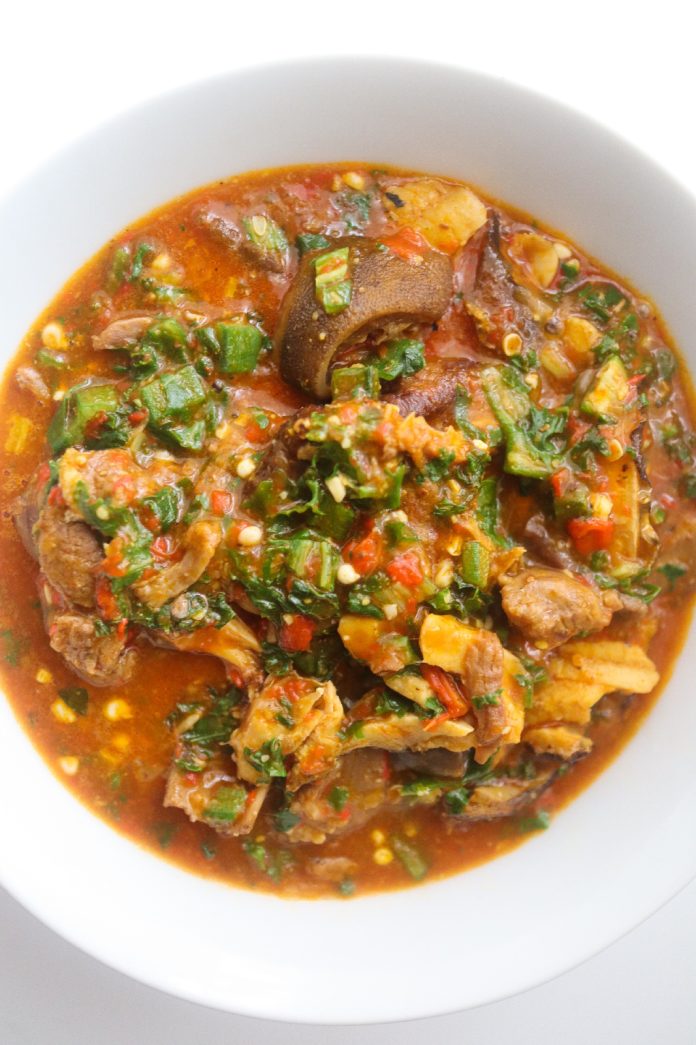Table of Contents
how to cook ogbono soup : Ogbono soup, a beloved dish in many Nigerian households, is a rich, flavorful, and nutritious meal that is often enjoyed with various types of swallow, such as pounded yam, eba, or fufu. This dish, known for its unique slimy texture and savory taste, is particularly delightful when prepared with Ugu leaves. Ugu, also known as fluted pumpkin leaves, adds a vibrant green color and a mild, slightly bitter flavor that perfectly complements the richness of the Ogbono seeds.
Cooking Ogbono soup with Ugu is a culinary art that requires a balance of ingredients, careful preparation, and a bit of patience. Whether you’re a seasoned cook or new to Nigerian cuisine, this guide will take you through the entire process, from selecting the best ingredients to mastering the techniques that will ensure your Ogbono soup turns out delicious every time.
The Cultural Significance of Ogbono Soup(how to cook ogbono soup)
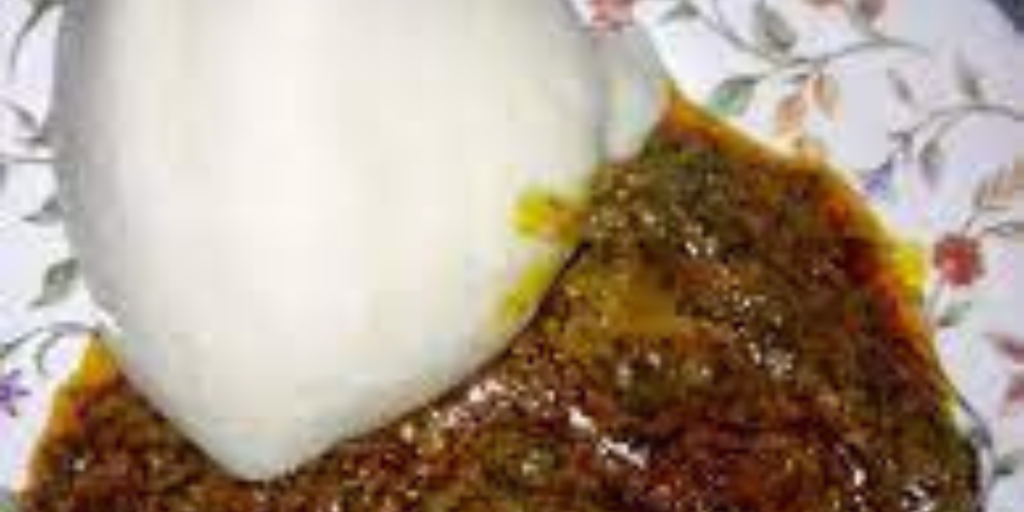
Ogbono soup is more than just a meal; it’s a dish that carries cultural significance in various regions of Nigeria. Often associated with the Igbo people, Ogbono soup is enjoyed by many ethnic groups across the country. It is traditionally served at family gatherings, festive occasions, and even as a special treat on weekends.
The soup’s appeal lies in its versatility. Depending on the region, it can be prepared with different types of meat, fish, or even seafood. The addition of Ugu leaves is a popular choice, particularly in the southeastern parts of Nigeria, where Ugu is a staple vegetable. The combination of Ogbono seeds and Ugu leaves not only enhances the flavor but also boosts the nutritional value of the soup.
(how to cook ogbono soup)
Selecting the Right Ingredients (how to cook ogbono soup)
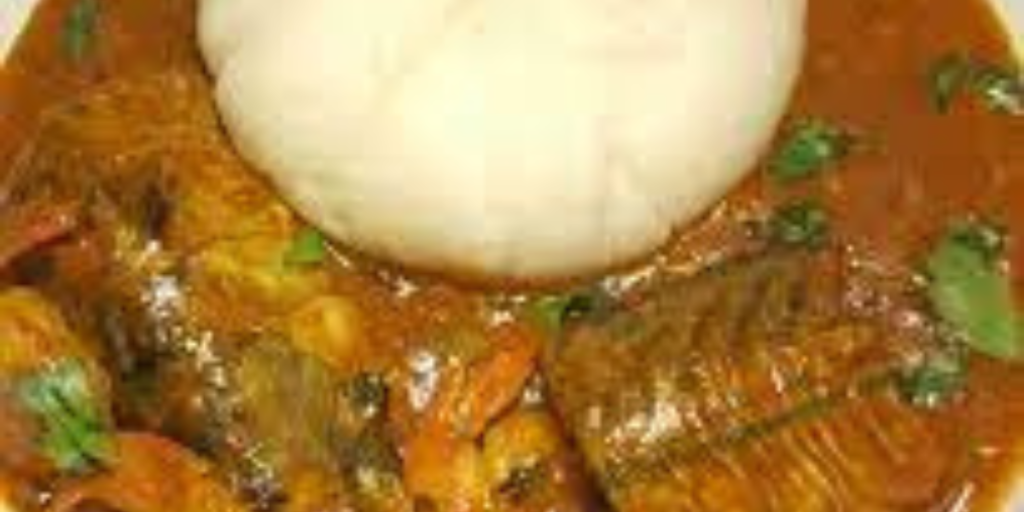
The success of your Ogbono soup largely depends on the quality of the ingredients you use. Freshness is key, especially when it comes to the Ogbono seeds and Ugu leaves. Here’s a closer look at the essential ingredients and how to choose the best ones:
- Ogbono Seeds: These seeds, also known as wild mango or African bush mango, are the star of the dish. They are responsible for the soup’s thick, slimy texture. When selecting Ogbono seeds, look for those that are whole, dry, and free from mold. The seeds should be finely ground before use, so purchasing pre-ground Ogbono from a reliable source or grinding them yourself ensures better quality.
- Ugu Leaves: Ugu leaves, or fluted pumpkin leaves, are commonly used in Nigerian cuisine. They are rich in iron, vitamins, and other essential nutrients. Fresh Ugu leaves should be vibrant green and free from yellowing or wilting. If fresh Ugu is unavailable, you can opt for frozen Ugu, which retains most of its nutritional value.
- Palm Oil: Palm oil gives Ogbono soup its characteristic red color and rich flavor. It is a traditional ingredient in many Nigerian dishes. When choosing palm oil, opt for unrefined red palm oil, which has a distinct flavor and higher nutritional content compared to refined versions.
- Assorted Meats: The choice of meat for Ogbono soup varies depending on personal preference. Common options include beef, goat meat, chicken, and oxtail. A combination of different meats can add depth to the soup’s flavor. Ensure the meat is fresh and properly cleaned before cooking.
- Stockfish and Dried Fish: These ingredients add an intense umami flavor to the soup. Stockfish, usually made from dried cod, should be soaked in water for a few hours to soften before use. Dried fish, on the other hand, can be added directly to the soup after removing any bones.
- Seasoning: Seasoning is crucial for balancing the flavors in Ogbono soup. Common seasonings include salt, bouillon cubes, and ground crayfish. Freshly ground crayfish adds a subtle seafood flavor that complements the earthiness of the Ogbono seeds.
- Spices and Peppers: Spices like ground pepper, Scotch bonnet peppers, and locust beans (iru) are often used to add heat and depth to the soup. The amount of pepper can be adjusted based on your spice tolerance.
- how to cook ogbono soup With Bitter leaf of 2024
Preparing the Ingredients (how to cook ogbono soup)
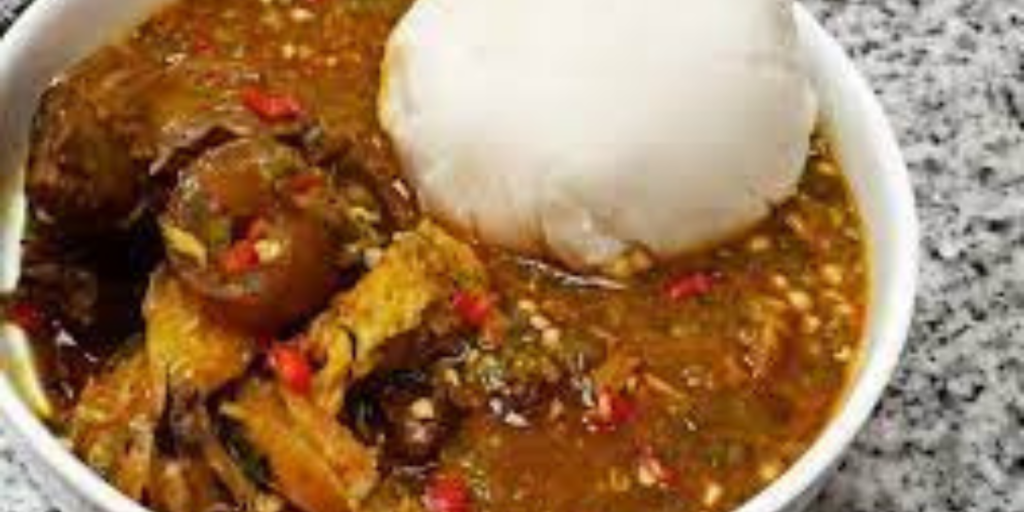
Proper preparation of the ingredients sets the foundation for a successful Ogbono soup. Here are some steps to ensure your ingredients are ready for cooking:
- Grinding the Ogbono Seeds: If you have whole Ogbono seeds, they need to be ground into a fine powder. You can use a blender, food processor, or traditional grinding stone for this task. The finer the powder, the smoother the soup will be. Ensure the grinding equipment is dry before use to prevent the seeds from clumping.
- Cleaning and Chopping Ugu Leaves: Wash the Ugu leaves thoroughly to remove any dirt or pesticides. Once cleaned, chop the leaves into bite-sized pieces. If using frozen Ugu, thaw the leaves and squeeze out any excess water before chopping.
- Prepping the Meats: Depending on the type of meat you’re using, it may need to be pre-cooked before adding it to the soup. Tougher cuts of meat, like beef or goat, should be boiled until tender. The meat stock produced during this process is valuable for adding flavor to the soup, so be sure to reserve it.
- Soaking Stockfish and Dried Fish: As mentioned earlier, stockfish needs to be soaked in water to soften. Depending on the thickness of the stockfish, this process can take anywhere from a few hours to overnight. Dried fish can be added directly after a quick rinse to remove any surface dust.
- Ogbono Soup Recipe Easy | Best Ogbono soup recipe 2024
Cooking Ogbono Soup with Ugu Leaves (how to cook ogbono soup)
With all the ingredients prepared, it’s time to start cooking. Ogbono soup requires a careful balance of heat and time to achieve the perfect texture and flavor. Follow these steps to create a delicious pot of Ogbono soup with Ugu leaves:
Step 1: Heating the Palm Oil
Begin by heating a few tablespoons of palm oil in a large pot over medium heat. The amount of oil can be adjusted based on your preference, but be careful not to use too much, as it can overpower the other flavors in the soup. Once the oil is hot, but not smoking, add the ground Ogbono powder. Stir continuously to prevent the Ogbono from clumping and ensure it dissolves smoothly into the oil.
Step 2: Adding the Meat and Stock
Once the Ogbono is fully dissolved in the palm oil, gradually add the meat and any reserved stock from the pre-cooking process. Stir the mixture well to combine the flavors. At this stage, you can also add the stockfish, dried fish, and any other protein you’re using. Allow the mixture to simmer gently, giving the flavors time to meld.
(how to cook ogbono soup)
Step 3: Seasoning the Soup
With the meat and stock added, it’s time to season the soup. Add salt, bouillon cubes, ground crayfish, and any other seasonings you prefer. If you like your soup spicy, now is the time to add ground pepper or chopped Scotch bonnet peppers. Stir the soup thoroughly to ensure the seasonings are evenly distributed.
Step 4: Incorporating Ugu Leaves
The final step in cooking Ogbono soup is adding the chopped Ugu leaves. The leaves should be added towards the end of the cooking process to preserve their vibrant green color and nutritional value. Stir the leaves into the soup and allow them to cook for just a few minutes until they are tender but still bright green. Be careful not to overcook the Ugu, as it can become mushy and lose its flavor.
Step 5: Adjusting the Consistency
Ogbono soup is known for its thick, slimy texture, but the consistency can be adjusted based on your preference. If the soup is too thick, you can add a little water or more meat stock to thin it out. If it’s too thin, allow it to simmer for a bit longer to reduce and thicken. Stir the soup occasionally to prevent it from sticking to the bottom of the pot.
Best Ogbono Soup Recipe Without Uziza In 2024
Serving Suggestions (how to cook ogbono soup)
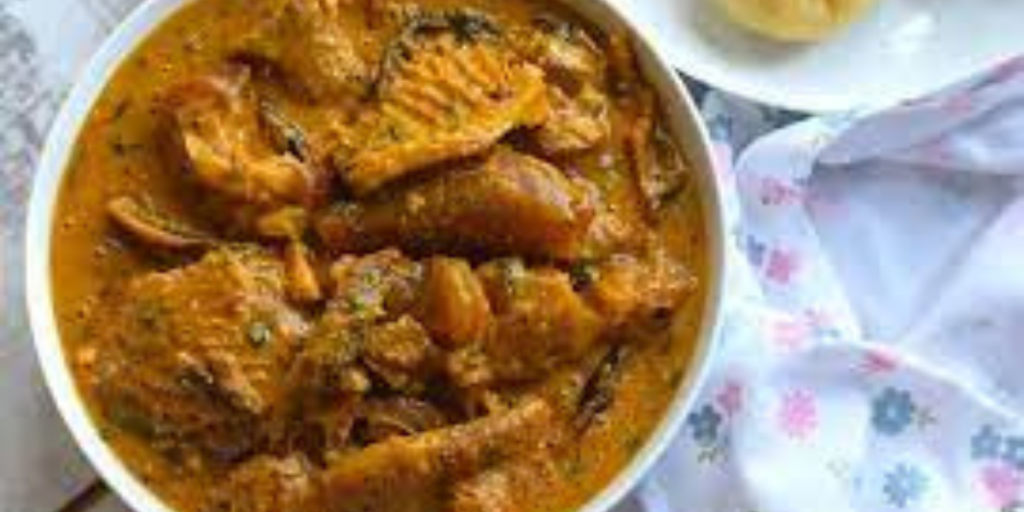
Ogbono soup with Ugu is best enjoyed with a side of swallow, such as pounded yam, eba, fufu, or semolina. The choice of swallow often depends on personal preference and regional traditions. Here are some popular options:
- Pounded Yam: This is perhaps the most traditional pairing for Ogbono soup. Pounded yam is made by boiling yam tubers and pounding them into a smooth, stretchy dough. Its neutral flavor and soft texture make it an ideal complement to the rich, savory soup.
- Eba: Made from garri (cassava flour), eba is a common choice for pairing with soups. It has a slightly grainy texture and a mildly sour taste, which balances the richness of the Ogbono soup.
- Fufu: Fufu is another popular swallow made from fermented cassava. It has a smooth, doughy texture and a slightly tangy flavor. Fufu is a staple in many West African countries and pairs well with a variety of soups, including Ogbono.
- Semolina: Semolina is made from durum wheat and has a fine, smooth texture. It’s a lighter option compared to yam or cassava-based swallows, making it a good choice if you prefer a less heavy meal.
- Best Ogbono Soup Recipe With Uziza Leaf in 2024
Enhancing the Flavor of Your Ogbono Soup (how to cook ogbono soup)

While the basic recipe for Ogbono soup is delicious on its own, there are several ways to enhance the flavor and make the dish even more special. Here are some tips and variations to try:
- Adding Seafood: For a coastal twist, consider adding seafood like prawns, crab, or periwinkle to your Ogbono soup. Seafood adds a fresh, briny flavor that complements the earthiness of the Ogbono seeds.
- Incorporating Vegetables: In addition to Ugu leaves, you can add other vegetables like bitter leaf, spinach, or uziza leaves to your Ogbono soup. Each vegetable brings its unique flavor and nutritional benefits to the dish.
- Using Smoked Fish: Smoked fish, such as mackerel or catfish, adds a deep, smoky flavor to the soup. Be sure to debone the fish before adding it to the pot to avoid any unwanted bones in the soup.
- Experimenting with Spices: While the traditional recipe uses basic seasonings, you can experiment with other spices like alligator pepper, nutmeg, or ground ginger to add complexity to the flavor profile.
Nutritional Benefits of Ogbono Soup with Ugu (how to cook ogbono soup)
Ogbono soup with Ugu is not only delicious but also packed with nutrients. Here’s a closer look at the health benefits of some of the key ingredients:
- Ogbono Seeds: Ogbono seeds are rich in healthy fats, particularly omega-3 fatty acids, which are beneficial for heart health. They also contain dietary fiber, which aids in digestion and helps to keep you feeling full.
- Ugu Leaves: Ugu leaves are a powerhouse of nutrients. They are rich in iron, which is essential for healthy blood circulation, as well as vitamins A and C, which support immune function and skin health. Ugu leaves are also high in antioxidants, which help to protect the body from free radicals.
- Palm Oil: While palm oil is often debated in terms of health benefits, unrefined red palm oil is a good source of vitamin E and beta-carotene, which are important for skin health and vision. However, it should be consumed in moderation due to its high saturated fat content.
- Meat and Fish: The assorted meats and fish used in Ogbono soup provide high-quality protein, which is essential for muscle repair and growth. They also contribute important minerals like zinc and iron.
- (how to cook ogbono soup)
Common Mistakes to Avoid When Cooking Ogbono Soup (how to cook ogbono soup)

Even experienced cooks can make mistakes when preparing Ogbono soup. Here are some common pitfalls and how to avoid them:
- Using Too Much Palm Oil: While palm oil is an essential ingredient, using too much can make the soup overly greasy and mask the flavors of the other ingredients. Stick to the recommended amount and adjust as needed.
- Overcooking Ugu Leaves: Ugu leaves should be added towards the end of the cooking process and cooked just until they are tender. Overcooking them can result in a loss of nutrients and a less vibrant green color.
- Failing to Properly Dissolve Ogbono Seeds: If the Ogbono seeds are not finely ground or properly dissolved in the palm oil, the soup can turn out lumpy or gritty. Take the time to grind the seeds finely and stir them thoroughly into the oil.
- Adding Too Much Water: The consistency of Ogbono soup is crucial. Adding too much water can make the soup too thin and dilute the flavors. If you find the soup is too thick, add liquid gradually and stir until you reach the desired consistency.
- Not Using Enough Seasoning: Ogbono soup relies on a balance of flavors from the meat, fish, and seasonings. Be sure to taste the soup as you go and adjust the seasoning as needed to achieve a well-rounded flavor.
Serving Ogbono Soup with Ugu (how to cook ogbono soup)
Ogbono soup is best served hot, accompanied by your choice of swallow. To serve, scoop the soup into a large bowl and arrange the swallow on a separate plate. Traditionally, the swallow is eaten with the hands, using small portions to scoop up the soup.
For a complete Nigerian dining experience, consider serving Ogbono soup with a side of pepper sauce or a light vegetable salad. A cold drink, such as Zobo (hibiscus tea) or freshly squeezed juice, pairs well with the rich flavors of the soup.
Storing and Reheating Ogbono Soup (how to cook ogbono soup)
Ogbono soup stores well and can be reheated without losing its flavor. Here are some tips for storing and reheating leftovers:
- Refrigeration: Allow the soup to cool completely before transferring it to an airtight container. It can be stored in the refrigerator for up to 3-4 days. When ready to eat, reheat the soup on the stove over low heat, stirring occasionally to prevent sticking.
- Freezing: Ogbono soup can also be frozen for longer storage. Divide the soup into portion-sized containers and freeze for up to 2-3 months. Thaw the soup in the refrigerator overnight before reheating.
- Reheating Tips: When reheating Ogbono soup, you may need to add a little water or stock to bring it back to the desired consistency, as the soup tends to thicken when stored.
The Joy of Cooking Ogbono Soup with Ugu (how to cook ogbono soup)
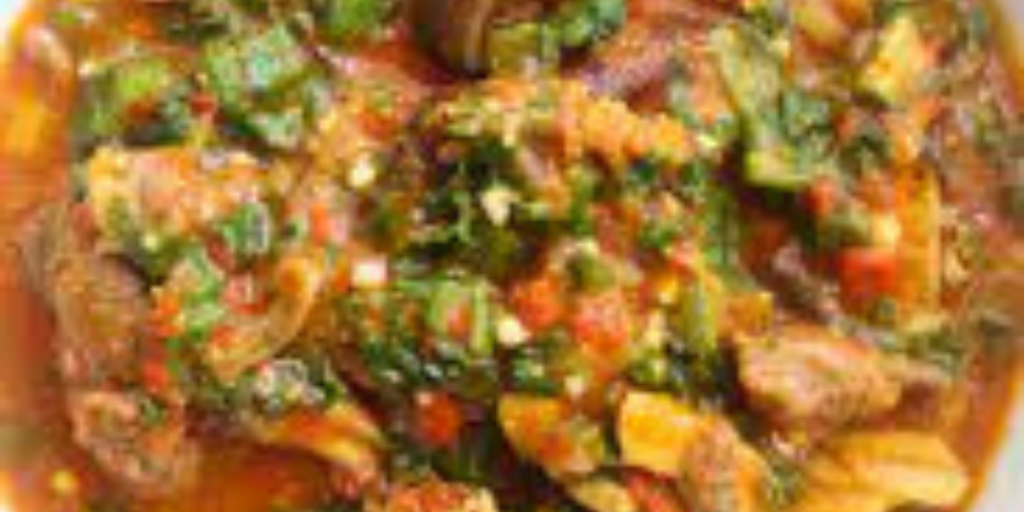
Cooking Ogbono soup with Ugu is a rewarding experience that brings together the rich flavors and cultural heritage of Nigeria. Whether you’re making it for a special occasion or as a comforting meal for your family, this soup is sure to be a hit.
With the right ingredients, careful preparation, and attention to detail, you can master the art of cooking Ogbono soup and enjoy its delicious taste and nutritional benefits. So gather your ingredients, put on your apron, and get ready to create a pot of Ogbono soup that will delight your taste buds and warm your soul.
















